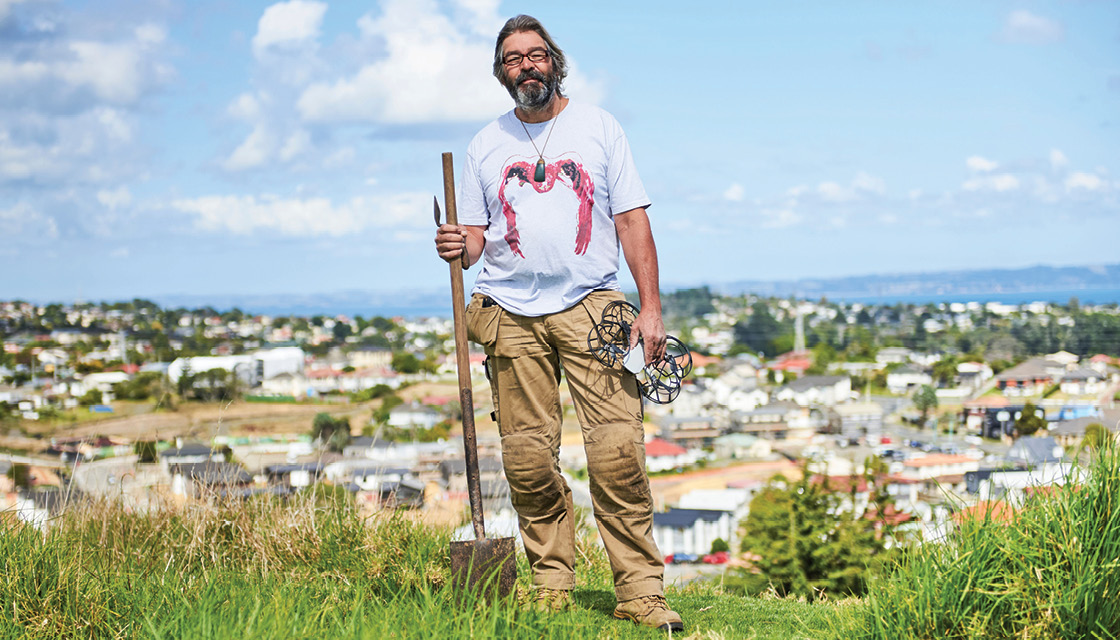Meet archaeologist Dr Hans-Dieter Bader. Hans looks deep into the material history of Tāmaki Makaurau, working with mana whenua, developers, and other experts to uncover the story of the landscape of our mountains and neighbourhoods. “Everywhere in the world, when people arrive into a natural environment for the first time, they enter into a relationship with that undisturbed environment – they change it and it changes them.”
With today’s Kāinga Ora Roskill Development project, the areas of Mt Albert, Ōwairaka and Mt Roskill are changing. As the faces of our maunga and urban centres transform with regeneration and amenity, there is another kind of work to be done. Archaeology.
When we think of archaeology, it’s easy to picture pyramids, and colonial explorers in pith helmets discovering the secrets of ancient civilisations. We asked Dr Hans-Dieter Bader, what it means to work as an archaeologist in Tāmaki Makaurau today? What can archaeology tell us about our local maunga and how does he work with the whenua of a culture not originally his own. “Respect, that’s what it is,” he says. “Having a personal relationship with mana whenua, and listening to what kuia and kaumatua have to say. The archaeological narrative is not a replacement for oral tradition. It is a different view that enhances the korero if it is done correctly.
If you imagine that oral traditions are voices on the stage of history, then archaeology is a way of looking at the theatre.” When it comes to the sites themselves, Hans says that the physical evidence he is excavating and documenting is embedded in a metaphysical realm that comes from tangata whenua. “As long as I’m aware and following tikanga, I have found there is no real conflict, because more often than not, any material items we find are adding to the oral tradition.”
The volcanic cone of Ōwairaka / Te Ahi-kāa-Rakataura / Mt Albert was an important pā for Māori of Tāmaki Makaurau. While many of the defences and terraces built by its early inhabitants have been lost, the maunga remains a site of archaeological, historical, cultural and spiritual significance to mana whenua.
When urban development takes place, archaeologists are part of the team. As old state homes are removed in preparation for new homes to be built, Hans is busy with background research. “I’m looking at historic maps and texts to create a picture of how the landscape might have been in the past,” he says. “Then I look at how modern people have changed and impacted the area.”
This overview tells Hans what he can expect to find in a specific place. “For the developers this is called a ‘risk map’ – because there is the risk that their work will be halted by finding something of archaeological interest!”
Sometimes Hans just takes a quick walkover of the site, or he’ll monitor the digger as it removes the topsoil, or he might be telling the digger where to dig trenches. “It’s all done with cultural monitors and mana whenua, and it only becomes an archaeological excavation if we find something,” he says. “That’s when we put the team of specialists together.”
You can read more about what is happening in Roskill in the latest issue of Roskulture here.

